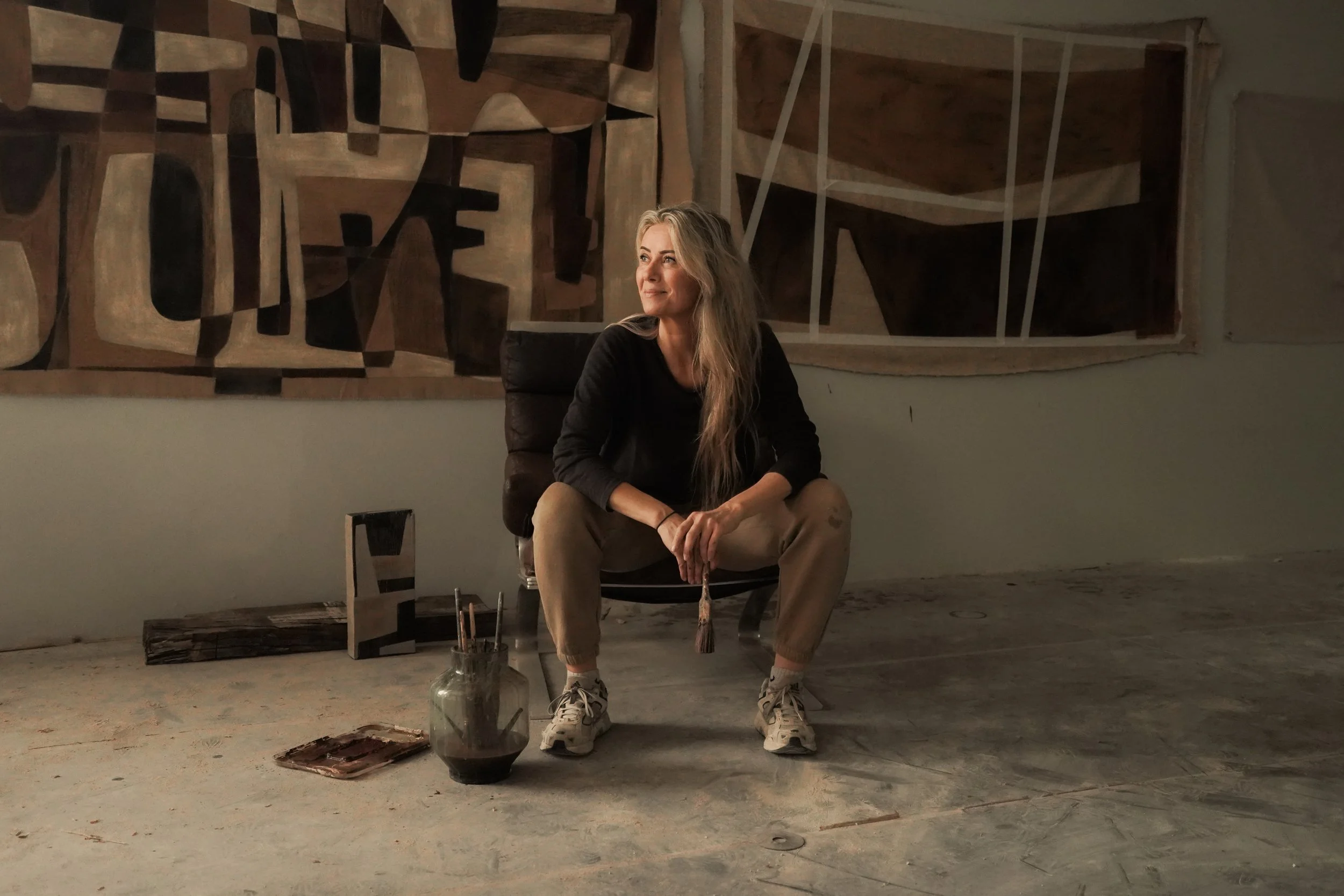RESIDENCY WITH ILSE VAN STOLTZ: THE POETRY OF CREATING
WHAT DOES IT MEAN FOR YOU TO BE AN ARTISTS?
Being an artist for me is about engaging in a conversation with the unseen. “The Poetry of objects” (title of a large painting made during my residency at Quinta Filippa). My process is an intimate dialogue, where each brushstroke, each decision, and each moment of hesitation builds an unseen layer of intuition, guided adjustments, failures, and triumphs. I do not attach myself to the final piece; rather, I am deeply intertwined with the act of creation itself. The artwork is a residue of this experience, a composition that emerges organically. When my part of the journey ends, the story of the piece is no longer mine, it belongs to the viewer, who is free to interpret and feel it in their own way.
TELL US ABOUT YOUR ART? WHAT MAKES IT UNIQUE?
My art is a process of excavation, an uncovering of emotions, textures, and tensions that exist beneath the surface. It is layered, both physically and conceptually, built from an intuitive interplay of control and surrender. The uniqueness of my work does not lie in the final form, but in the invisible echoes of the process, the unseen hesitations, the erased lines, the moments of destruction and reconstruction. Each piece carries this history within it, vibrating with the energy of its making.
I am deeply inspired by the friction between opposites, the way contrasts collide and shape one another. In my compositions, I seek out the tension between fluidity and rigidity, between softness and sharpness. Just as the rolling hills push against the geometric edges of architecture in the landscape around me at Quinta Filippa, my work balances organic spontaneity with structured intervention. This constant dialogue between elements that resist yet define each other gives my work its pulse. It is not about achieving perfect harmony but embracing the beauty that arises from discord, from the way opposites challenge and transform one another.
WHAT MATERIALS DO YOU USE FOR YOUR CREATIONS?
I choose materials that allow me to work dynamically, ones that can be built up, altered, and sometimes even undone. Textures and depth are essential, so I often work with a combination of paint, mixed media, and unconventional elements that bring an organic unpredictability to the surface. The physicality of my materials mirrors my process: layered, raw, and evolving, just like the emotions embedded within the work.
WHY DID YOU DECIDE TO COLLABORATE WITH QUINTA FILIPPA?
My collaboration with Quinta Filippa has been a transformative experience. The artist-in-residence period and the creative exchange have had a profound impact on my work in that timeframe. At my core, I am a maker,someone who thrives in the raw energy of building, shaping, and transforming. I feel most at home in an environment where people work with their hands, whether it’s a mechanic under the hood of a car, a chef crafting a beautiful dish, or an artisan shaping materials into something new. Quinta Filippa embodies this spirit of hands-on creation, and being surrounded by that energy has deeply influenced the way I approached my art during my residency.
TELL US ABOUT THE ART PIECES YOU MADE FOR QUINTA FILIPPA?
The works I am creating for Quinta Filippa are infused with the energy of making, of layering, adjusting, and responding to what emerges in the process. My residency and collaboration here have given me a renewed sense of experimentation, allowing me to push my boundaries and embrace the unpredictable. Each piece is a reflection of this dynamic exchange, carrying the environment and the people who inspire it.
Beyond the human energy, the physical surroundings have also left their mark on my work. The rolling hills (“ Ondulada” Title of other large painting made during my residency at Quinta Filippa) and raw nature set against the sharp lines of geometric architecture create a visual tension that resonates deeply with me. These contradictions, organic versus structured, fluid versus defined, become part of the compositions, shaping the rhythm and form of the pieces. The friction between these elements fuels my creative process, resulting in works that embody both the harmony and the unrest of their origins.
Once completed, my role ends, and they begin a new journey, one that belongs to the space and the people who experience them.






